Understanding pottery kilns: types & uses
When it comes to the fascinating world of pottery, the kiln is the unsung hero. It's the magical box that transforms soft clay into durable ceramic masterpieces. But not all kilns are created equal! Just like a chef chooses the right oven for their dish, potters must select the right kiln for their creations. In this article, we will explore the various types of pottery kilns, their unique uses, and the essential factors to consider when choosing the right one for your artistic journey. Whether you're a beginner eager to dive into the world of ceramics or an experienced potter looking to refine your craft, understanding these kilns will help you unlock your creative potential.
There are several types of pottery kilns, each designed for specific firing techniques and materials. Understanding these types helps potters choose the best option for their projects. From electric to gas and wood-fired kilns, each type has its own unique characteristics that can significantly influence the outcome of your pottery. So, let’s break it down and see what each type has to offer!
Electric kilns are popular for their ease of use and precise temperature control. They are ideal for beginners and small studios, offering consistent results for various pottery techniques. Imagine being able to set your kiln to the exact temperature you need and walk away, knowing that your pieces will come out just as you envisioned. That's the beauty of electric kilns!
Electric kilns provide numerous advantages, including user-friendly operation, minimal emissions, and the ability to achieve high temperatures, making them suitable for various clay bodies and glazes. They are like the trusty sidekick for potters, always reliable and ready to help you create stunning pieces.
Electric kilns typically operate within a wide temperature range, allowing potters to fire low-fire, mid-fire, and high-fire ceramics efficiently. This versatility accommodates diverse artistic styles and techniques, making them a popular choice among potters. They can handle everything from delicate earthenware to robust stoneware, ensuring that no artistic idea is out of reach.
While electric kilns can be more expensive upfront, their efficiency and low maintenance costs can make them a cost-effective choice for potters over time. Think of it as an investment in your craft—one that pays off with each beautifully fired piece. The long-term savings on energy and repairs can make a significant difference, especially for those who fire frequently.
Despite their benefits, electric kilns have limitations, such as lower firing capacities and slower heating rates compared to gas or wood-fired kilns. This may affect larger projects, so potters need to consider their specific needs before making a decision. If you’re planning to create large sculptures or extensive installations, you might find electric kilns a bit restrictive.
Gas kilns are favored for their ability to achieve high temperatures and create unique effects through reduction firing. They offer versatility for experienced potters seeking specific results. The dance of flames and the smell of gas create an atmosphere that many artists find inspiring. Gas kilns allow for a level of creativity that can be hard to replicate with electric models.
There are various types of gas kilns, including downdraft, updraft, and car kilns. Each type offers distinct advantages and is suited for different firing techniques and pottery styles. For example, downdraft kilns provide excellent heat distribution, while updraft kilns are known for their efficiency. Understanding these differences can help potters choose the right kiln for their artistic vision.
Gas kilns allow for various firing techniques, including reduction and oxidation, which can significantly impact the final appearance and texture of the pottery. The choice of firing technique can lead to breathtaking results, from vibrant colors to unique surface textures. This versatility makes gas kilns a favorite among many potters looking to push the boundaries of their art.
Wood-fired kilns provide a traditional approach to pottery firing, often resulting in unique surface textures and colors. They require more experience and commitment but can yield stunning results. The process of wood firing is almost like an art form in itself, where the potter collaborates with nature and the elements to create something truly special.
Wood firing often involves community participation, fostering collaboration among potters and creating a shared experience that enhances the artistic process and builds relationships. Imagine a group of potters gathered around a kiln, sharing stories and techniques while waiting for their creations to emerge. It’s a beautiful way to connect with others who share the same passion.
While wood-fired kilns can have a larger environmental impact due to emissions, many potters are exploring sustainable practices to minimize their carbon footprint during wood firing. By using reclaimed wood or implementing efficient firing techniques, potters can enjoy the beauty of wood firing while being mindful of the environment.
- What type of kiln is best for beginners? Electric kilns are often recommended for beginners due to their ease of use and precise temperature control.
- Can I use any type of clay in an electric kiln? Yes, electric kilns can fire a variety of clay bodies, including low-fire, mid-fire, and high-fire clays.
- How do I choose the right kiln for my needs? Consider factors such as the size of your projects, the types of firing techniques you want to explore, and your budget.
- Are wood-fired kilns more environmentally friendly? While they have a larger impact, many potters are adopting sustainable practices to reduce their carbon footprint.
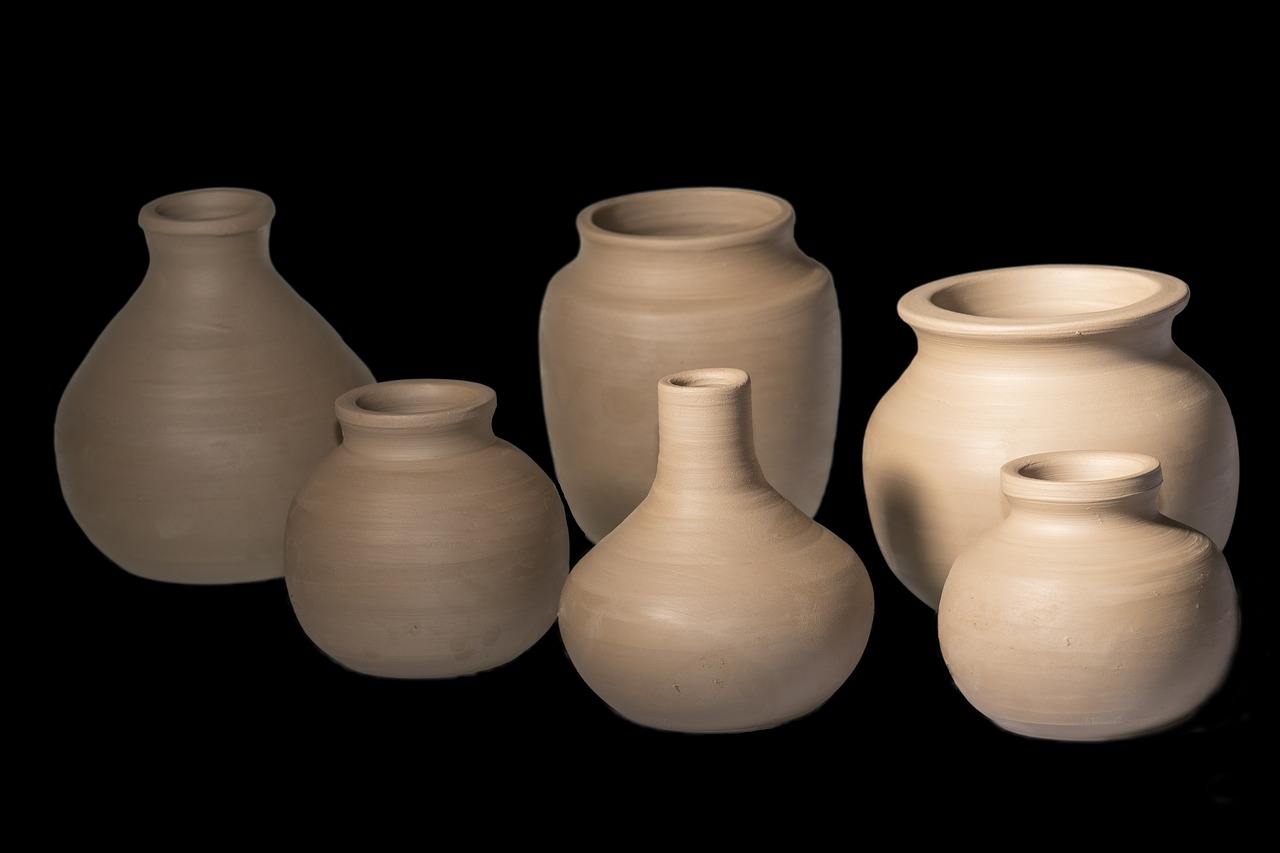
Types of Pottery Kilns
This article explores the various types of pottery kilns, their uses, and the factors to consider when selecting the right kiln for your pottery needs.
When it comes to pottery kilns, there’s no one-size-fits-all solution. Each type of kiln is engineered with distinct features tailored for specific firing techniques and materials. Understanding these types is crucial for potters who want to maximize their creative potential and achieve the desired results in their projects.
Let’s dive into the different types of pottery kilns, starting with the most common ones: electric, gas, and wood-fired kilns. Each type has its own set of characteristics, advantages, and drawbacks that can greatly impact your pottery experience.
Electric kilns are widely favored for their user-friendly operation and precise temperature control. They are perfect for beginners and small studios due to their ability to deliver consistent results across various pottery techniques. Imagine being able to set a temperature and walk away, knowing that your pieces will come out just as you envisioned!
Next up, we have gas kilns, which are particularly popular among experienced potters. These kilns can achieve high temperatures and offer the unique ability to create effects through reduction firing. The versatility of gas kilns allows for a range of firing techniques that can significantly alter the final appearance and texture of your pottery.
Finally, let’s not forget about wood-fired kilns. This traditional approach to pottery firing is not for the faint-hearted. It requires a deeper commitment and a bit more experience, but the results can be absolutely stunning. Wood firing often imparts unique surface textures and colors to the pottery, creating pieces that are truly one-of-a-kind.
In summary, the choice of kiln can greatly influence your pottery practice. Here’s a quick comparison of the three main types:
| Type of Kiln | Advantages | Limitations |
|---|---|---|
| Electric Kilns |
|
|
| Gas Kilns |
|
|
| Wood-Fired Kilns |
|
|
In conclusion, selecting the right type of kiln is essential for achieving the results you desire in your pottery projects. By understanding the unique features and capabilities of electric, gas, and wood-fired kilns, you can make an informed decision that aligns with your artistic goals and technical needs.
Q: What type of kiln is best for beginners?
A: Electric kilns are often the best choice for beginners due to their ease of use and consistent results.
Q: Can I use a gas kiln for low-fire pottery?
A: Yes, gas kilns can be used for low-fire pottery, but they are typically favored for their high-fire capabilities.
Q: Are wood-fired kilns environmentally friendly?
A: Wood-fired kilns can have a larger environmental impact, but many potters are adopting sustainable practices to minimize this effect.
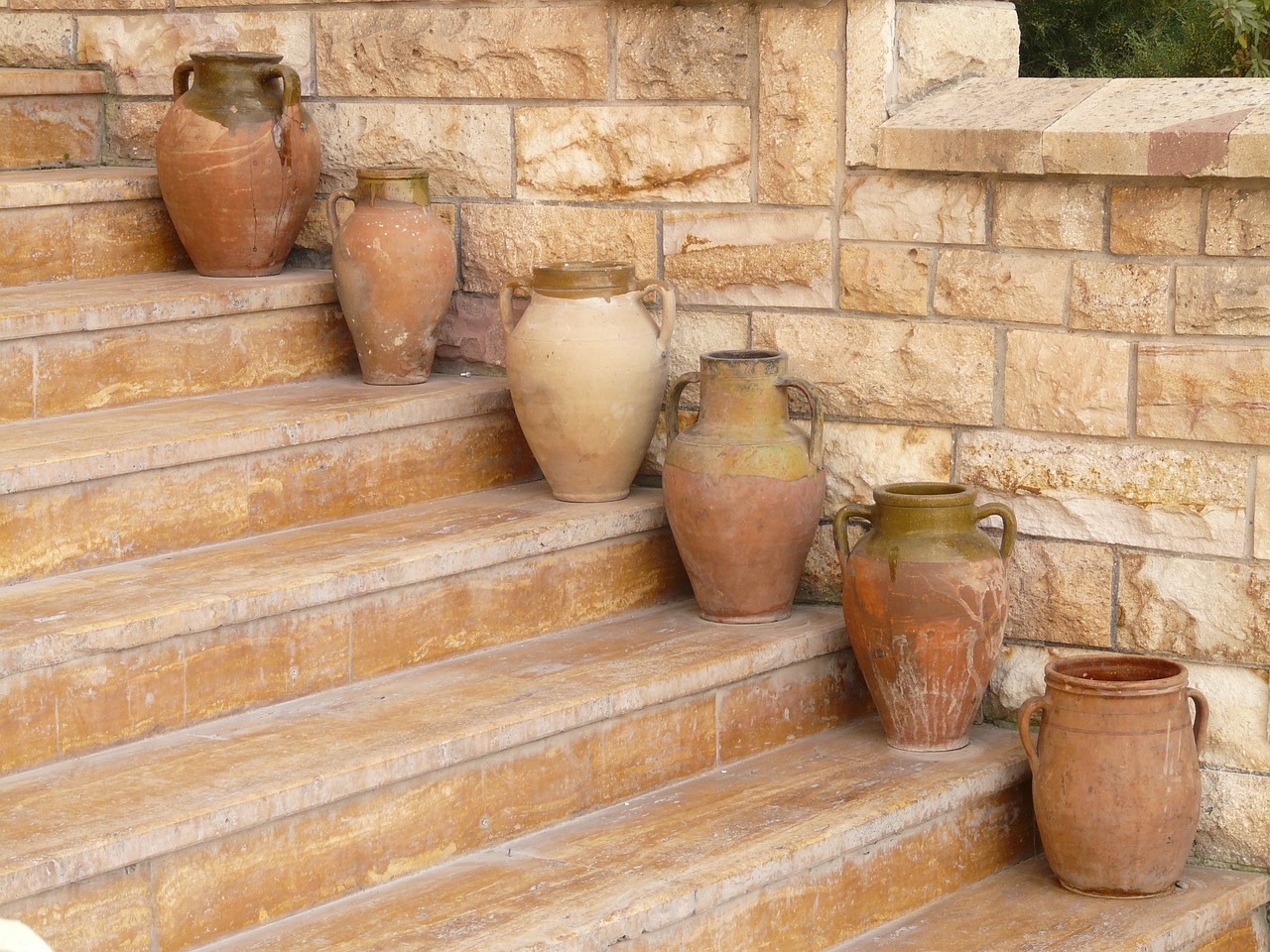
Electric Kilns
This article explores the various types of pottery kilns, their uses, and the factors to consider when selecting the right kiln for your pottery needs.
There are several types of pottery kilns, each designed for specific firing techniques and materials. Understanding these types helps potters choose the best option for their projects.
Electric kilns are a favorite among many potters, especially those starting their journey in ceramics. Why, you ask? Well, they combine ease of use with precise temperature control, making them incredibly appealing for both beginners and seasoned artists alike. Imagine being able to fire your pieces without the hassle of managing a flame or worrying about the wind! Electric kilns can offer a consistent and reliable firing experience, which is crucial when you want to achieve that perfect glaze or intricate design.
One of the standout features of electric kilns is their user-friendly operation. You simply set the desired temperature, and the kiln does the rest. This feature is particularly beneficial for newcomers who may find traditional firing methods a bit daunting. Additionally, electric kilns produce minimal emissions, creating a cleaner working environment. They are capable of reaching high temperatures, making them suitable for a variety of clay bodies and glazes.
Electric kilns typically operate within a wide temperature range, accommodating low-fire, mid-fire, and high-fire ceramics. This versatility allows potters to explore various artistic styles and techniques without the need for multiple kilns. For instance, if you’re working on a low-fire project, you can easily switch to a high-fire piece without any major adjustments. This adaptability is like having a Swiss Army knife in your pottery toolkit!
Now, let's talk about money. While electric kilns may seem pricier upfront, consider this: their efficiency and low maintenance costs can actually make them a cost-effective choice over time. Think of it as investing in a quality tool that pays off in the long run. Plus, with advancements in technology, many electric kilns are becoming more affordable, making them accessible to a wider range of potters.
However, it’s essential to note that electric kilns do come with some limitations. For instance, they generally have lower firing capacities compared to gas or wood-fired kilns. This means if you're working on larger projects, you may find yourself limited by the size of your electric kiln. Additionally, electric kilns tend to heat up more slowly, which can be a drawback for those eager to get their creations fired and ready. But hey, every kiln has its quirks, right?
Gas kilns are favored for their ability to achieve high temperatures and create unique effects through reduction firing. They offer versatility for experienced potters seeking specific results.
There are various types of gas kilns, including downdraft, updraft, and car kilns. Each type offers distinct advantages and is suited for different firing techniques and pottery styles.
Gas kilns allow for various firing techniques, including reduction and oxidation, which can significantly impact the final appearance and texture of the pottery.
Wood-fired kilns provide a traditional approach to pottery firing, often resulting in unique surface textures and colors. They require more experience and commitment but can yield stunning results.
Wood firing often involves community participation, fostering collaboration among potters and creating a shared experience that enhances the artistic process and builds relationships.
While wood-fired kilns can have a larger environmental impact due to emissions, many potters are exploring sustainable practices to minimize their carbon footprint during wood firing.
- What is the best kiln for beginners? Electric kilns are generally recommended for beginners due to their ease of use and reliable temperature control.
- Can electric kilns fire stoneware? Yes, electric kilns can fire stoneware effectively, especially if they have a wide temperature range.
- How long does it take to fire a kiln? The firing time varies depending on the kiln type and the desired temperature, but it typically ranges from a few hours to over a day.
- Are gas kilns more efficient than electric kilns? Gas kilns can be more efficient for larger projects, but electric kilns offer consistent results for smaller pieces.
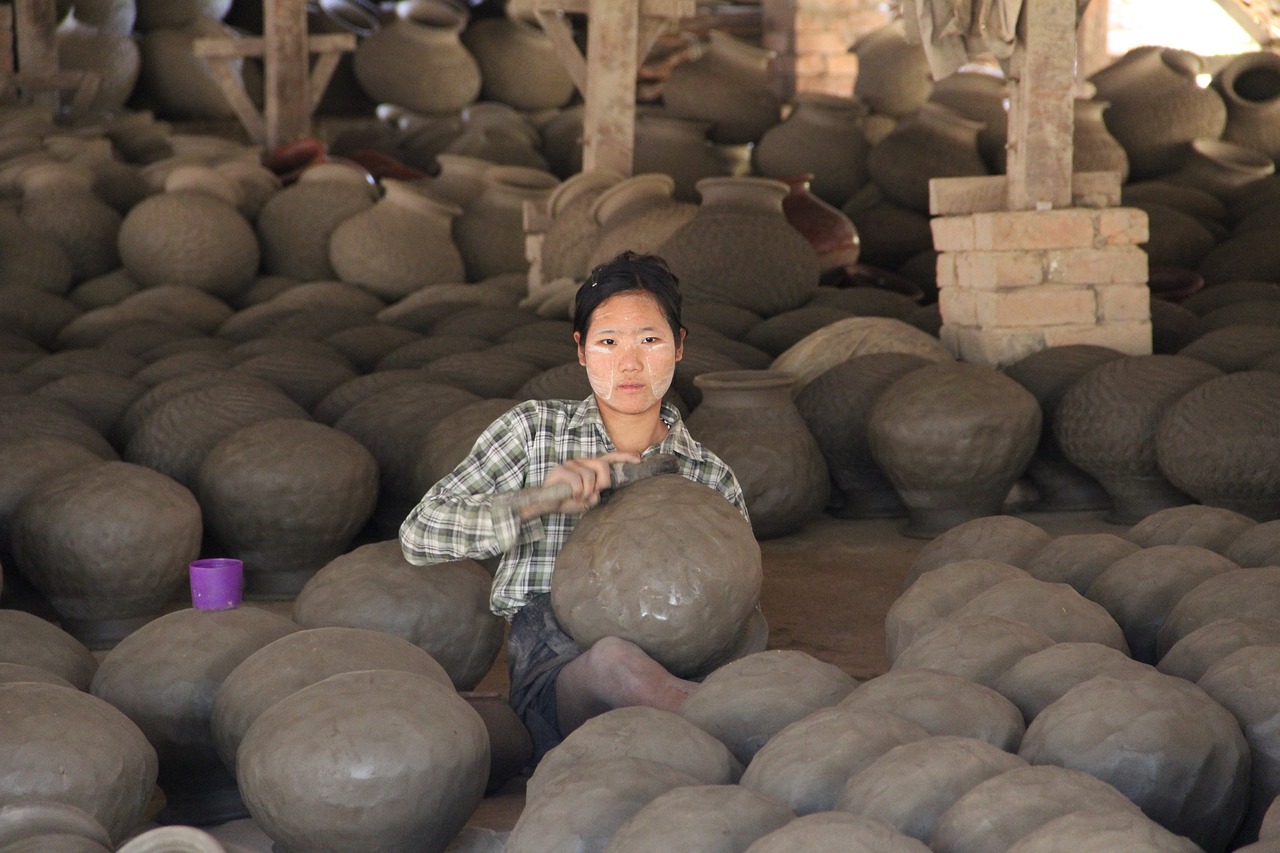
Advantages of Electric Kilns
This article explores the various types of pottery kilns, their uses, and the factors to consider when selecting the right kiln for your pottery needs.
There are several types of pottery kilns, each designed for specific firing techniques and materials. Understanding these types helps potters choose the best option for their projects.
Electric kilns are popular for their ease of use and precise temperature control. They are ideal for beginners and small studios, offering consistent results for various pottery techniques.
When it comes to pottery, electric kilns are often the go-to choice for many artists, and it's easy to see why. One of the most significant advantages of electric kilns is their user-friendly operation. You simply set the temperature and let the kiln do the rest. This ease of use is especially beneficial for beginners who might feel overwhelmed by the complexities of other kiln types.
Another important factor is the minimal emissions produced by electric kilns. Unlike wood or gas kilns, which can release harmful pollutants into the environment, electric kilns operate cleanly. This makes them an excellent choice for potters who are conscious of their environmental impact. Additionally, electric kilns can achieve high temperatures consistently, making them suitable for a wide range of clay bodies and glazes.
Let’s dive deeper into the specifics:
| Feature | Details |
|---|---|
| User-Friendliness | Simple controls for easy operation. |
| Emissions | Low emissions, environmentally friendly. |
| Temperature Control | Precise control for consistent results. |
| Versatility | Suitable for various firing techniques. |
Electric kilns typically operate within a wide temperature range, allowing potters to fire low-fire, mid-fire, and high-fire ceramics efficiently. This versatility accommodates diverse artistic styles and techniques, giving artists the freedom to explore their creativity without being limited by their equipment.
While the upfront cost of electric kilns can be higher than other types, it's essential to consider the long-term savings. Their efficiency and low maintenance costs can make them a cost-effective choice for potters over time. Think of it like investing in a quality tool; the initial expense might be steep, but the benefits you reap in the long run are well worth it!
However, it's crucial to remember that electric kilns do have some limitations. They generally have lower firing capacities and slower heating rates compared to gas or wood-fired kilns. This might be a concern for potters working on larger projects or those who require rapid firing. But for many, the advantages far outweigh these drawbacks.
Gas kilns are favored for their ability to achieve high temperatures and create unique effects through reduction firing. They offer versatility for experienced potters seeking specific results.
There are various types of gas kilns, including downdraft, updraft, and car kilns. Each type offers distinct advantages and is suited for different firing techniques and pottery styles.
Gas kilns allow for various firing techniques, including reduction and oxidation, which can significantly impact the final appearance and texture of the pottery.
Wood-fired kilns provide a traditional approach to pottery firing, often resulting in unique surface textures and colors. They require more experience and commitment but can yield stunning results.
Wood firing often involves community participation, fostering collaboration among potters and creating a shared experience that enhances the artistic process and builds relationships.
While wood-fired kilns can have a larger environmental impact due to emissions, many potters are exploring sustainable practices to minimize their carbon footprint during wood firing.
- What is the best type of kiln for beginners? Electric kilns are often recommended for beginners due to their ease of use and consistent results.
- Can I fire all types of clay in an electric kiln? Yes, electric kilns can accommodate low-fire, mid-fire, and high-fire ceramics.
- How long does it take to fire pottery in an electric kiln? Firing times can vary, but typically it takes several hours to complete a firing cycle.
- Are gas kilns better than electric kilns? It depends on your specific needs. Gas kilns offer unique firing effects but may require more experience.

Temperature Range
This article explores the various types of pottery kilns, their uses, and the factors to consider when selecting the right kiln for your pottery needs.
There are several types of pottery kilns, each designed for specific firing techniques and materials. Understanding these types helps potters choose the best option for their projects.
Electric kilns are popular for their ease of use and precise temperature control. They are ideal for beginners and small studios, offering consistent results for various pottery techniques.
Electric kilns provide numerous advantages, including user-friendly operation, minimal emissions, and the ability to achieve high temperatures, making them suitable for various clay bodies and glazes.
The of electric kilns is one of their most appealing features, making them versatile tools for potters. Typically, these kilns can operate within a wide range of temperatures, often from low-fire to high-fire ceramics. This flexibility allows artists to explore different firing techniques and achieve a variety of results.
For example, low-fire ceramics, which usually require temperatures around 1,830°F (1,000°C), are perfect for vibrant glazes and decorative pieces. On the other hand, mid-fire ceramics, firing at temperatures around 2,200°F (1,200°C), offer a balance between durability and aesthetic appeal. Finally, high-fire ceramics, which can reach temperatures of 2,400°F (1,300°C) or more, are ideal for stoneware and porcelain, providing strength and rich textures.
To illustrate this further, here's a quick overview of the temperature ranges for different types of pottery:
| Type of Ceramic | Temperature Range (°F) | Temperature Range (°C) |
|---|---|---|
| Low-Fire | 1,830 - 2,000 | 1,000 - 1,093 |
| Mid-Fire | 2,200 - 2,350 | 1,200 - 1,300 |
| High-Fire | 2,400+ | 1,300+ |
This temperature versatility means that whether you're experimenting with earthenware, stoneware, or porcelain, an electric kiln can accommodate your creative needs. So, whether you're a novice looking to dip your toes into pottery or a seasoned artist refining your craft, the temperature range of electric kilns can support your artistic journey.
While electric kilns can be more expensive upfront, their efficiency and low maintenance costs can make them a cost-effective choice for potters over time.
Despite their benefits, electric kilns have limitations, such as lower firing capacities and slower heating rates compared to gas or wood-fired kilns, which may affect larger projects.
Gas kilns are favored for their ability to achieve high temperatures and create unique effects through reduction firing. They offer versatility for experienced potters seeking specific results.
There are various types of gas kilns, including downdraft, updraft, and car kilns. Each type offers distinct advantages and is suited for different firing techniques and pottery styles.
Gas kilns allow for various firing techniques, including reduction and oxidation, which can significantly impact the final appearance and texture of the pottery.
Wood-fired kilns provide a traditional approach to pottery firing, often resulting in unique surface textures and colors. They require more experience and commitment but can yield stunning results.
Wood firing often involves community participation, fostering collaboration among potters and creating a shared experience that enhances the artistic process and builds relationships.
While wood-fired kilns can have a larger environmental impact due to emissions, many potters are exploring sustainable practices to minimize their carbon footprint during wood firing.
- What is the best kiln for beginners? Electric kilns are often recommended due to their ease of use and consistent results.
- Can I use an electric kiln for all types of clay? Yes, electric kilns can accommodate low-fire, mid-fire, and high-fire clays.
- What is reduction firing? It's a firing technique used in gas kilns that reduces oxygen in the kiln, affecting the color and texture of the pottery.
- Are wood-fired kilns environmentally friendly? They can have a larger carbon footprint, but many potters are adopting sustainable practices to mitigate this.
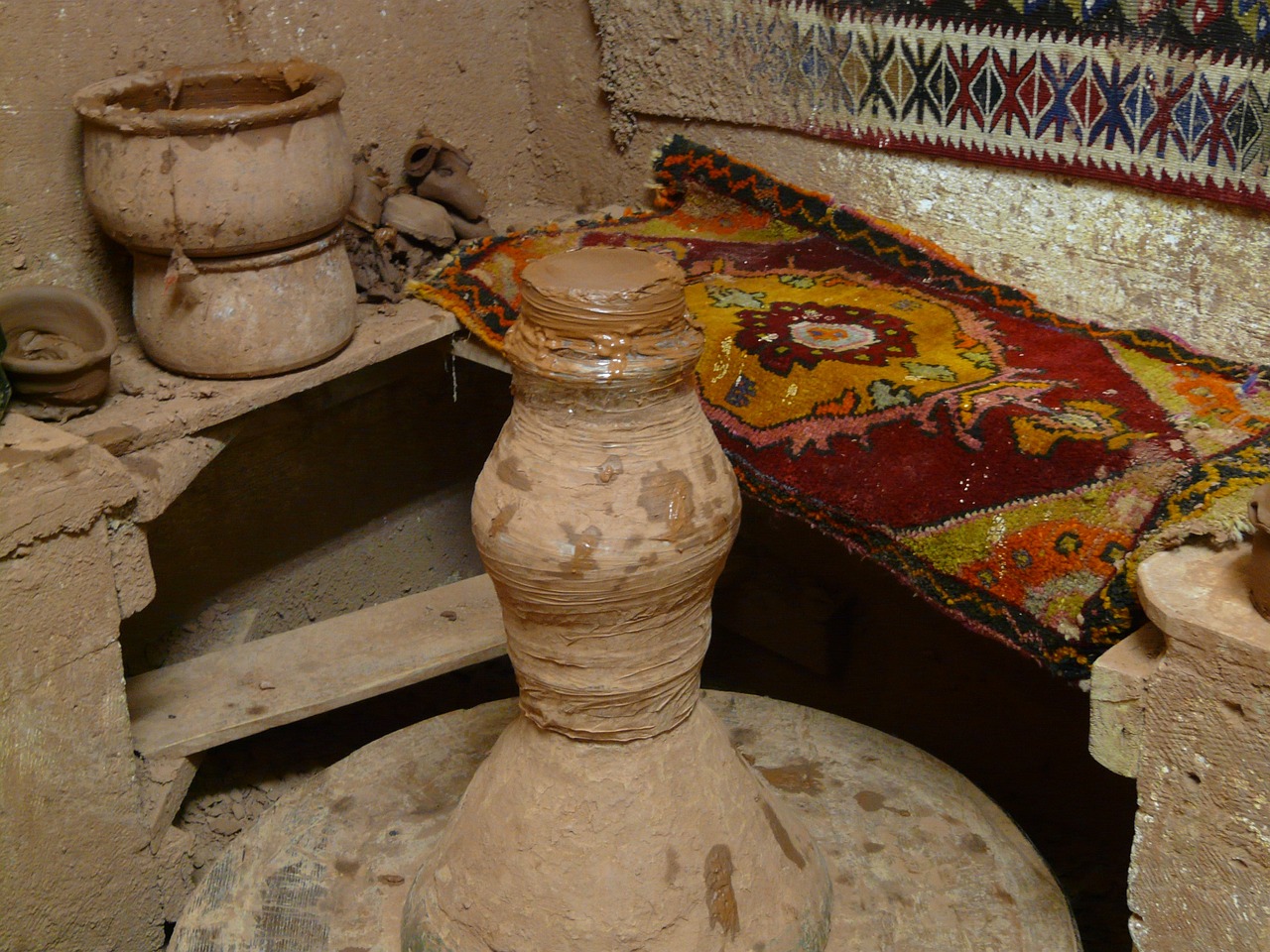
Cost Considerations
This article explores the various types of pottery kilns, their uses, and the factors to consider when selecting the right kiln for your pottery needs.
There are several types of pottery kilns, each designed for specific firing techniques and materials. Understanding these types helps potters choose the best option for their projects.
Electric kilns are popular for their ease of use and precise temperature control. They are ideal for beginners and small studios, offering consistent results for various pottery techniques.
Electric kilns provide numerous advantages, including user-friendly operation, minimal emissions, and the ability to achieve high temperatures, making them suitable for various clay bodies and glazes.
Electric kilns typically operate within a wide temperature range, allowing potters to fire low-fire, mid-fire, and high-fire ceramics efficiently, accommodating diverse artistic styles and techniques.
When it comes to choosing an electric kiln, play a pivotal role in the decision-making process. While the initial investment for an electric kiln may seem steep, potters should consider the long-term benefits that can outweigh these upfront costs. Typically, electric kilns range from $500 for smaller models to over $3,000 for larger, more advanced kilns. However, the efficiency of electric kilns often leads to lower operational costs over time.
One of the key factors to consider is the energy consumption. Electric kilns are generally more energy-efficient than their gas or wood-fired counterparts. This efficiency translates into lower electricity bills, especially for potters who frequently fire their work. Additionally, electric kilns require less maintenance, which can save you money in the long run.
In terms of resale value, electric kilns tend to retain their value well. If you decide to upgrade or change your kiln in the future, you may find that you can sell your electric kiln at a reasonable price, further offsetting your initial investment. To give you a clearer picture, here’s a simple breakdown of costs:
| Type of Kiln | Initial Cost Range | Energy Efficiency | Maintenance Costs |
|---|---|---|---|
| Electric Kiln | $500 - $3,000 | High | Low |
| Gas Kiln | $1,000 - $5,000 | Moderate | Moderate |
| Wood-Fired Kiln | $2,000 - $10,000 | Low | High |
Ultimately, while the initial cost of electric kilns might be higher, their long-term savings on energy and maintenance make them a worthwhile investment for many potters. It's essential to evaluate your specific needs, budget, and firing frequency to determine the best kiln for your pottery journey.
Gas kilns are favored for their ability to achieve high temperatures and create unique effects through reduction firing. They offer versatility for experienced potters seeking specific results.
There are various types of gas kilns, including downdraft, updraft, and car kilns. Each type offers distinct advantages and is suited for different firing techniques and pottery styles.
Gas kilns allow for various firing techniques, including reduction and oxidation, which can significantly impact the final appearance and texture of the pottery.
Wood-fired kilns provide a traditional approach to pottery firing, often resulting in unique surface textures and colors. They require more experience and commitment but can yield stunning results.
Wood firing often involves community participation, fostering collaboration among potters and creating a shared experience that enhances the artistic process and builds relationships.
While wood-fired kilns can have a larger environmental impact due to emissions, many potters are exploring sustainable practices to minimize their carbon footprint during wood firing.
- What is the best type of kiln for beginners? Electric kilns are generally the best choice for beginners due to their ease of use and consistent results.
- Can I use an electric kiln for all types of pottery? Yes, electric kilns can accommodate a wide range of clay bodies and glazes.
- How often should I fire my kiln? This depends on your production needs, but regular firing will help you become more familiar with your kiln's capabilities.
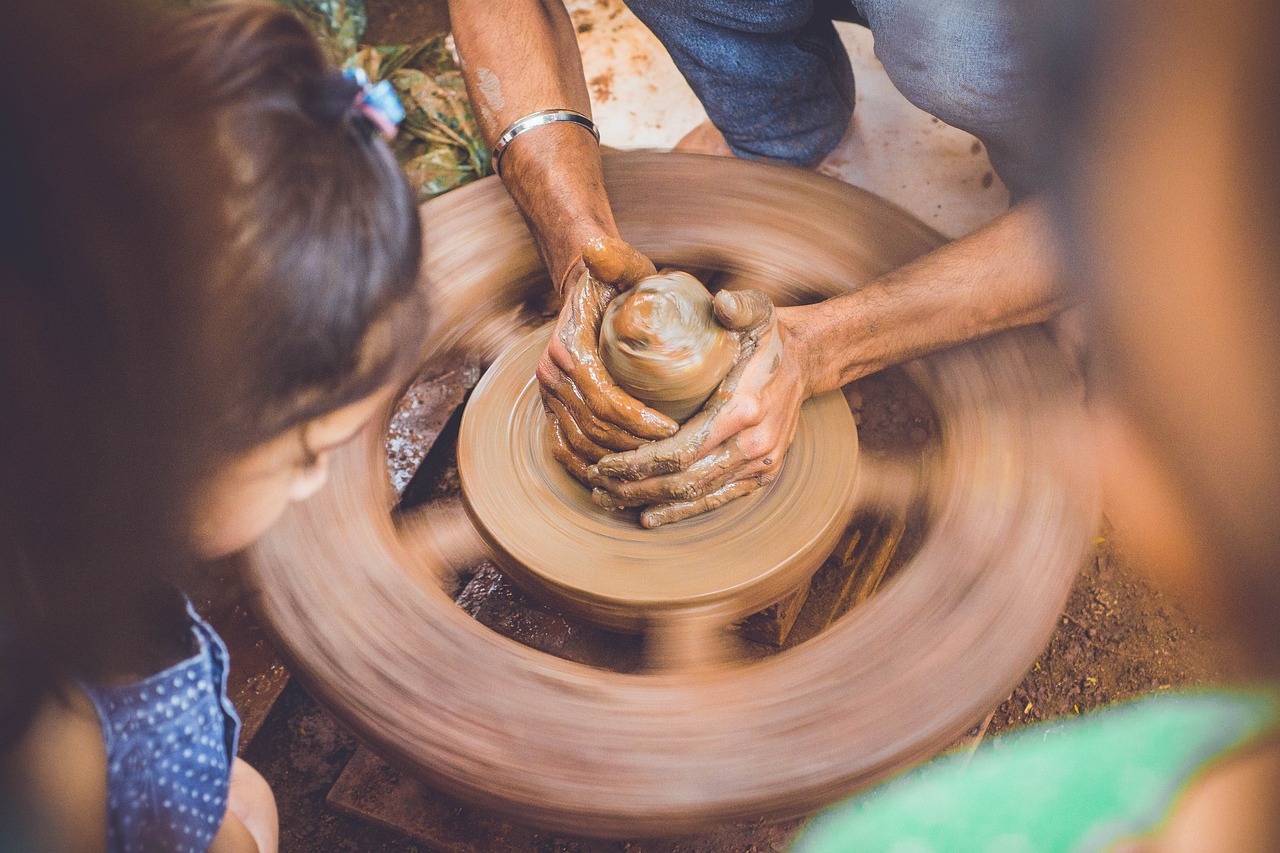
Limitations of Electric Kilns
While electric kilns are often heralded as the go-to choice for many potters due to their user-friendly nature and consistent results, they do come with a few limitations that potters should consider. One of the primary drawbacks is their lower firing capacity. Unlike gas or wood-fired kilns, electric kilns typically have a smaller interior space, which means that potters may struggle to fire larger pieces or multiple items at once. This can be particularly frustrating for those looking to scale up their production or create oversized works of art.
Another limitation is the heating rate. Electric kilns generally heat up more slowly compared to their gas counterparts. This slower ramp-up time can be a disadvantage when trying to achieve specific firing techniques or when time is of the essence. For instance, in a fast-paced studio environment, waiting for the kiln to reach the desired temperature can hinder productivity and creative flow.
Moreover, electric kilns can be less versatile when it comes to firing techniques. While they are excellent for achieving consistent results with standard clay bodies and glazes, they may not allow for the same experimental firing methods that gas or wood kilns offer. Potters aiming for unique surface effects or specific atmospheric conditions might find electric kilns somewhat limiting in their artistic expression.
Finally, cost considerations can play a role in the decision-making process. Although the initial investment in an electric kiln can be high, potters must also think about the operational costs associated with electricity. In some regions, electricity can be expensive, and this might make the long-term costs of using an electric kiln higher than anticipated. Therefore, it’s essential to weigh these factors carefully before making a purchase.
In conclusion, while electric kilns are a fantastic choice for many, understanding their limitations helps potters make informed decisions that align with their artistic goals. Whether it's the size, heating rate, firing techniques, or operational costs, each of these factors plays a crucial role in the overall pottery experience.
- What is the best kiln for beginners? Electric kilns are often recommended for beginners due to their ease of use and consistent firing results.
- Can I fire large pieces in an electric kiln? Electric kilns typically have a smaller capacity, which may limit the size of pieces you can fire.
- How long does it take for an electric kiln to heat up? Electric kilns generally take longer to reach firing temperatures compared to gas kilns.
- Are electric kilns environmentally friendly? While they have lower emissions than wood kilns, the environmental impact depends on the source of electricity used.

Gas Kilns
Gas kilns are a favorite among many potters, and it's easy to see why. They offer the ability to reach high temperatures and create unique visual effects through a process known as reduction firing. This firing method, where the oxygen supply is limited, can lead to stunning glazes and rich textures that are often hard to replicate with other types of kilns. If you’re an experienced potter looking to explore the depths of your craft, a gas kiln might just be the perfect companion on your artistic journey.
One of the main attractions of gas kilns is their versatility. They come in various designs, each tailored to different firing techniques and pottery styles. For instance, downdraft kilns provide excellent heat distribution, while updraft kilns allow for a more traditional approach to firing. Car kilns, on the other hand, are designed for larger batches of pottery, making them ideal for production potters. Understanding the distinctions between these types can significantly enhance your pottery-making experience.
When using a gas kiln, the firing techniques you choose can dramatically affect the final outcome of your work. Reduction and oxidation firing are two popular methods. During reduction firing, the kiln atmosphere is altered to limit oxygen, which can produce vibrant colors and textures. In contrast, oxidation firing allows for a more traditional approach, resulting in brighter and more consistent colors. The choice between these techniques often depends on the specific effects a potter wishes to achieve, showcasing the gas kiln's flexibility.
However, it’s essential to consider the operational aspects of gas kilns. They require a steady supply of gas and careful monitoring of the kiln environment, which can be a bit daunting for beginners. But don't let that scare you away! The learning curve can be incredibly rewarding, and many potters find that the results are worth the extra effort. Once you get the hang of it, you'll likely appreciate the dynamic nature of gas firing and the unique results it can produce.
In summary, gas kilns offer a wealth of opportunities for potters eager to experiment and create. With their ability to achieve high temperatures and facilitate various firing techniques, they stand out as a versatile option in the pottery world. Whether you’re a seasoned pro or just stepping into the realm of pottery, exploring the world of gas kilns can lead to some truly spectacular creations.
- What is the main advantage of using a gas kiln? Gas kilns allow for precise temperature control and the ability to create unique glazes through reduction firing.
- Are gas kilns suitable for beginners? While they can be more complex than electric kilns, many beginners find the learning process rewarding and beneficial for their craft.
- How do I maintain a gas kiln? Regular maintenance includes checking gas connections, cleaning burners, and ensuring proper ventilation to avoid buildup of harmful gases.
- Can I achieve specific colors with a gas kiln? Yes! The firing atmosphere (oxidation vs. reduction) plays a crucial role in the colors and textures of your pottery.
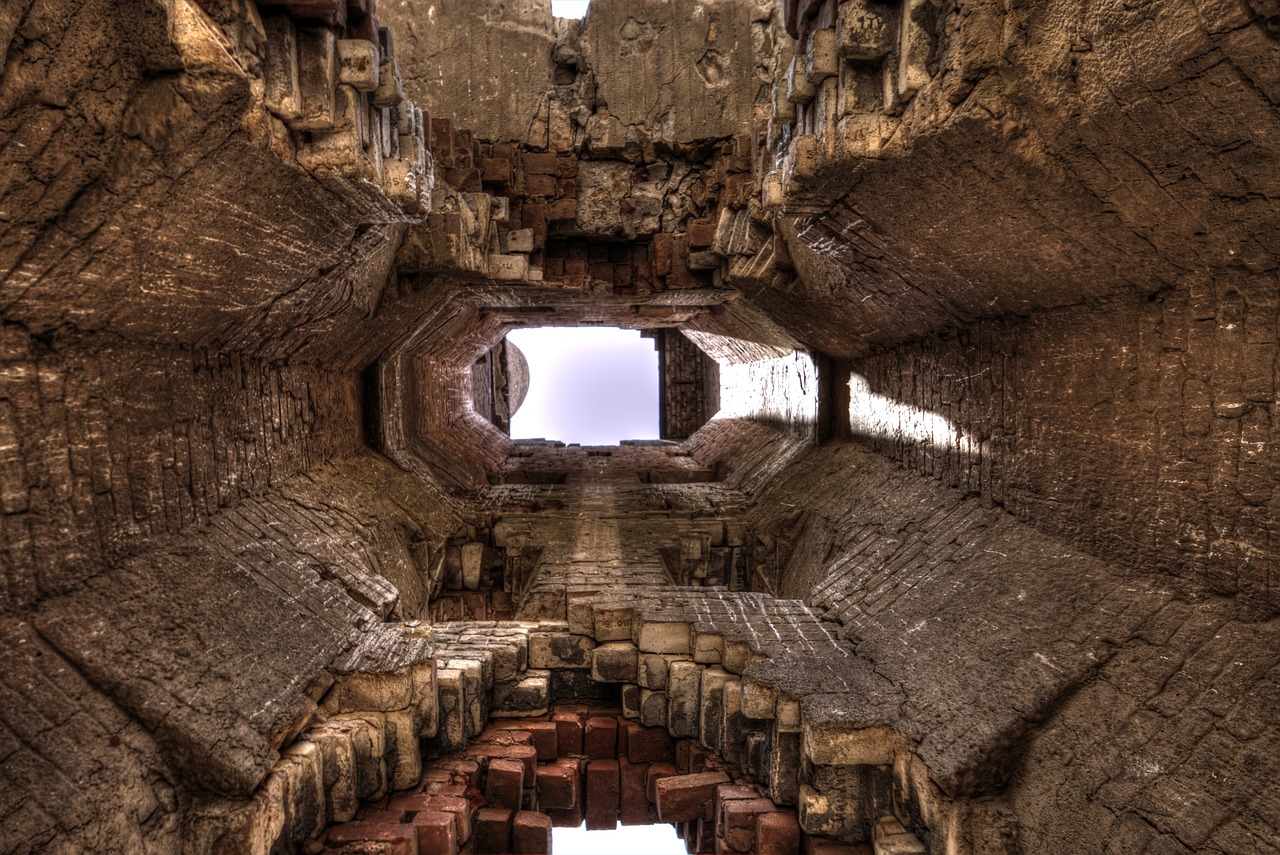
Types of Gas Kilns
When it comes to gas kilns, potters are often faced with a delightful array of options. Each type of gas kiln is designed with specific firing techniques in mind, catering to the diverse needs of artists. Understanding the different types can help you make an informed decision that aligns with your creative vision. Let's dive into the most common types of gas kilns, shall we?
One popular type is the downdraft kiln. This kiln is designed to have a chimney that pulls the hot gases down through the kiln, which allows for even heat distribution and superior control over the atmosphere within the firing chamber. This feature is particularly beneficial for potters looking to achieve specific reduction effects, as it allows them to manipulate the atmosphere more effectively than other kiln types. The downdraft design also minimizes the risk of hot spots, ensuring that each piece comes out with consistent results.
Next, we have the updraft kiln. This traditional design has the burner located at the bottom, allowing hot gases to rise through the kiln. While it may not provide the same level of atmospheric control as the downdraft kiln, it is often favored for its simplicity and effectiveness in achieving high temperatures. Many potters find that the updraft kiln can produce stunning results, especially when working with rich glazes that respond well to the heat and atmosphere.
Another interesting option is the car kiln. This type of kiln is typically larger and designed for batch firing. Car kilns are ideal for potters who want to fire multiple pieces at once, making them a popular choice in production settings. The design allows for easy loading and unloading, which can save time and effort. However, it's worth noting that car kilns may require more space and a higher initial investment compared to smaller kilns.
In addition to these types, potters can also explore specialized gas kilns, such as anagama kilns, which are a type of wood-fired kiln that incorporates gas firing techniques. These kilns are known for their ability to create unique surface textures and colors, providing a beautiful blend of traditional and modern firing methods.
Ultimately, the choice of gas kiln depends on your specific needs, artistic goals, and the type of pottery you wish to create. Each type of gas kiln offers its own set of advantages and challenges, making it essential to consider how each aligns with your pottery practice.
Q: What is the main advantage of using a gas kiln over an electric kiln?
A: Gas kilns offer greater flexibility in terms of firing techniques, such as reduction and oxidation, which can result in unique surface effects and colors that are often sought after by experienced potters.
Q: Are gas kilns more difficult to operate than electric kilns?
A: While gas kilns may require a bit more knowledge and experience to operate effectively, many potters find the learning curve rewarding, as it allows for a greater range of artistic expression.
Q: Can I use a gas kiln for all types of clay?
A: Yes, gas kilns can be used for various clay types, but it's essential to consider the specific firing temperatures and techniques that work best for your chosen clay body and glaze.
Q: How do I maintain a gas kiln?
A: Regular maintenance involves checking for gas leaks, ensuring burners are clean and functioning correctly, and monitoring the kiln's overall condition to prolong its lifespan and efficiency.
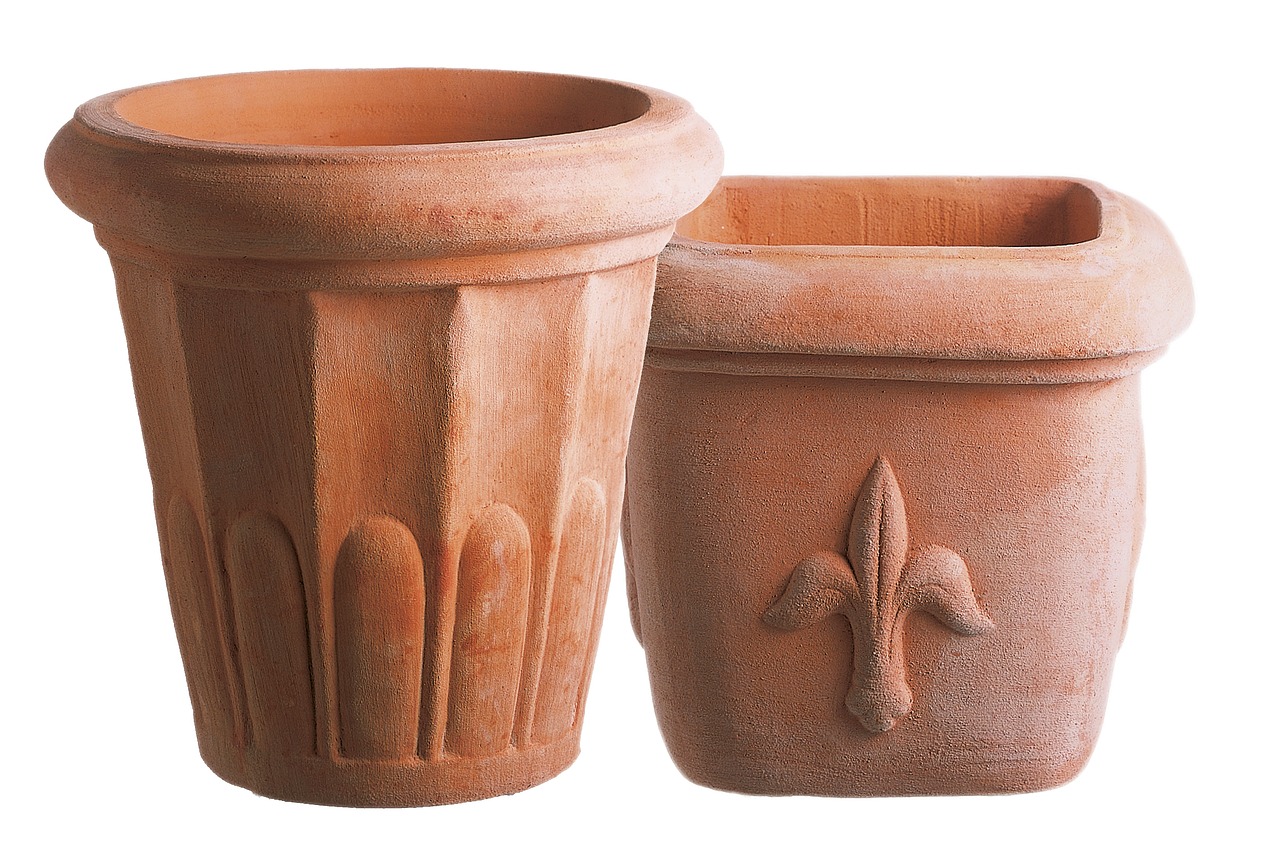
Firing Techniques
When it comes to pottery, the firing technique you choose is crucial because it dramatically influences the final look and feel of your creations. There are several methods that potters can utilize, each offering unique results and challenges. Two of the most notable techniques are oxidation and reduction firing. Understanding these methods can help you achieve the desired aesthetic in your work.
In oxidation firing, the kiln is supplied with ample oxygen, allowing for complete combustion of the fuel. This technique often results in bright, vibrant colors, especially when using certain glazes. The process is relatively straightforward, making it a popular choice for beginners and those looking for consistency. However, while oxidation firing can yield stunning results, it may not produce the same depth of color and texture that reduction firing can offer.
On the other hand, reduction firing involves limiting the oxygen supply within the kiln. This creates a chemically altered environment that can lead to unique effects, such as rich, earthy tones and varied surface textures. Potters often use this technique to achieve specific results with their glazes, especially those that react differently in a reduction atmosphere. The challenge here lies in the need for experience; managing the kiln's atmosphere requires a keen understanding of how different materials will react under reduced oxygen conditions.
Here’s a quick comparison of the two techniques:
| Firing Technique | Oxygen Level | Color Results | Complexity |
|---|---|---|---|
| Oxidation Firing | High | Bright, consistent colors | Beginner-friendly |
| Reduction Firing | Low | Rich, varied tones | Requires experience |
Another fascinating aspect of firing techniques is the concept of saggar firing. This method involves placing pottery inside a protective container, or saggar, that shields it from direct flame and ash. This technique can create stunning surface effects, as the materials within the saggar interact with the pottery during firing. It’s like giving your pieces a cozy blanket while they undergo their fiery transformation!
Ultimately, the firing technique you choose will depend on your artistic vision, the materials at hand, and your level of expertise. Experimenting with different techniques can lead to delightful surprises, allowing your creativity to flourish. So, whether you prefer the predictability of oxidation or the adventurous nature of reduction, there’s a world of possibilities waiting for you in the kiln.
- What is the difference between oxidation and reduction firing?
Oxidation firing allows for ample oxygen, resulting in bright colors, while reduction firing limits oxygen, creating richer, more varied tones. - Which firing technique is best for beginners?
Oxidation firing is often recommended for beginners due to its straightforward process and consistent results. - Can I use both techniques for the same piece?
Yes! Many potters experiment with both techniques to achieve unique effects on their pottery.
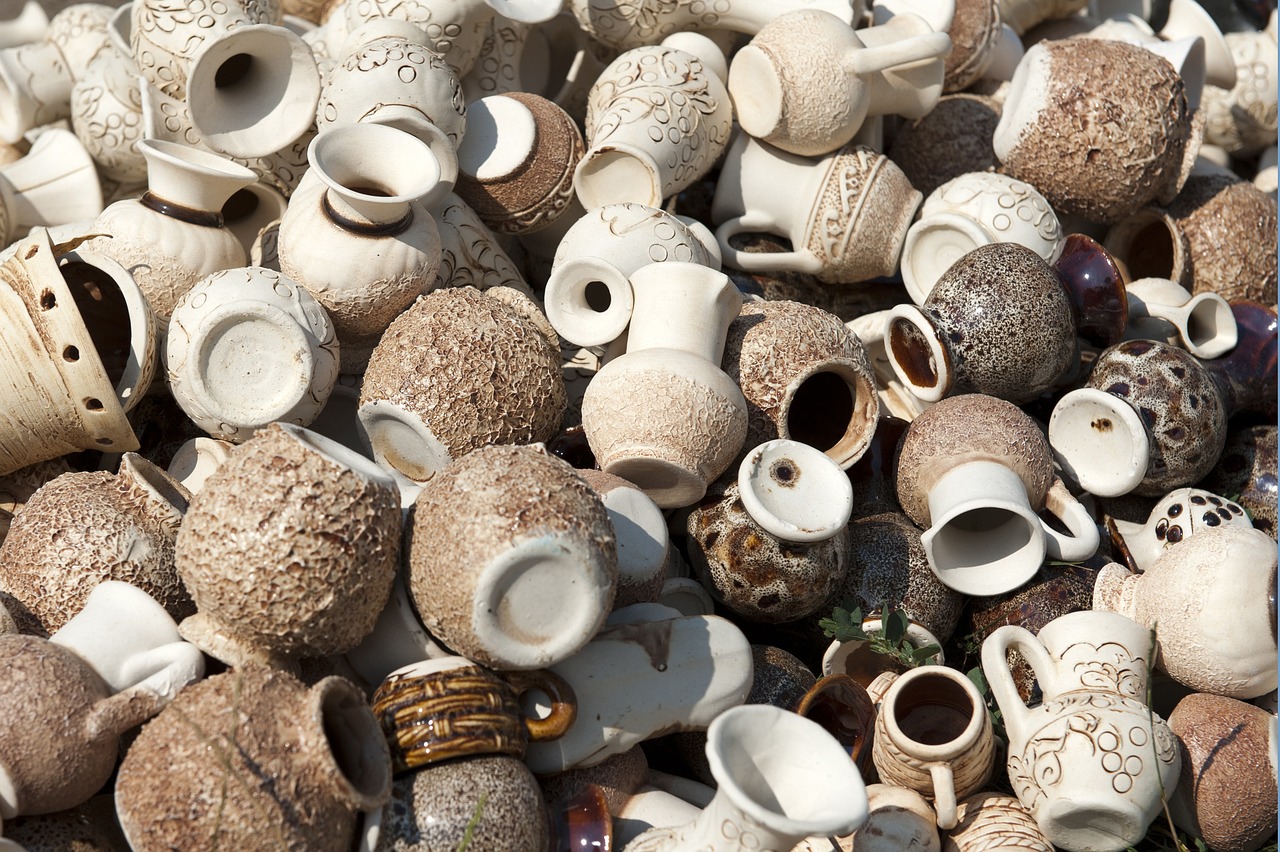
Wood-Fired Kilns
Wood-fired kilns offer a traditional approach to pottery firing that many artisans cherish. Unlike electric or gas kilns, these kilns rely on the natural heat generated by burning wood, which not only fuels the fire but also influences the final outcome of the pottery. The unique aesthetic qualities achieved through wood firing—such as varied surface textures and rich, earthy colors—make this method particularly appealing to those who value the artistic process as much as the final product. Imagine each piece of pottery as a canvas, where the flames dance and the ash settles, creating a one-of-a-kind masterpiece that tells a story of its own.
However, firing pottery in a wood-fired kiln is not just about the end result; it also requires a significant amount of experience and commitment. Potters must be well-versed in the intricacies of managing the fire, understanding how different types of wood affect the firing process, and knowing how to control the atmosphere inside the kiln. This level of involvement often means that wood-fired kilns are more suitable for seasoned potters or those willing to learn through experience. The communal aspect of wood firing can also enhance the overall experience; many potters come together to share the workload, knowledge, and excitement of the firing process.
One of the most fascinating aspects of wood-fired kilns is the community and collaboration they foster. Many potters participate in group firing events, where they not only work on their individual pieces but also share techniques and celebrate the unpredictable nature of wood firing. These gatherings can create a sense of camaraderie among potters, as they collectively witness the transformation of their work through fire. The shared experience of loading the kiln, stoking the fire, and ultimately unveiling the finished pieces can be incredibly rewarding, creating lasting bonds and friendships.
Despite the beauty and community that wood-fired kilns can bring, it's essential to consider the environmental impact associated with this firing method. The emissions produced by burning wood can contribute to air pollution, raising concerns among environmentally conscious potters. However, many are actively seeking sustainable practices to mitigate this impact. Some potters are experimenting with alternative fuels or sourcing wood from sustainable forests, while others are taking steps to improve the efficiency of their kilns, reducing the amount of wood needed for firing. By adopting these practices, potters can enjoy the rich tradition of wood firing while also being mindful of their ecological footprint.
In conclusion, wood-fired kilns represent a beautiful blend of tradition, artistry, and community. They challenge potters to engage deeply with their craft and embrace the unpredictable nature of fire. While this method requires a commitment to learning and sustainability, the rewards—both in terms of the final product and the relationships built along the way—are truly invaluable.
- What types of wood are best for firing? Hardwoods like oak, maple, and hickory are often preferred due to their high heat output and unique ash effects.
- How long does a wood firing take? A typical wood firing can last anywhere from 24 to 72 hours, depending on the size of the kiln and the desired temperature.
- Can beginners use wood-fired kilns? While beginners can participate, it is recommended to have some experience or guidance from seasoned potters to ensure a successful firing.
- What are the environmental impacts of wood-fired kilns? Wood-fired kilns can produce significant emissions, but potters are increasingly adopting sustainable practices to minimize their carbon footprint.

Community and Collaboration
When it comes to pottery, the journey is often just as important as the destination. Wood-fired kilns embody this spirit of community and collaboration, creating a unique environment where potters come together to share their passion for clay. Unlike electric or gas kilns, which are typically operated individually, wood-fired kilns require a team effort. Imagine a group of artists, each bringing their own skills and ideas to the table, working side by side to create something beautiful. This collaborative aspect not only enhances the artistic process but also builds lasting relationships among potters.
Participating in a wood-firing event often involves several stages, from preparing the kiln to stacking the pots and finally, firing the kiln itself. Each step requires communication, trust, and a shared vision. Community wood-firing events can last for days, with potters taking shifts to monitor the kiln, stoking the fire, and adjusting the airflow. This camaraderie fosters a sense of belonging and encourages potters to learn from one another, share techniques, and experiment with new ideas. The atmosphere is often filled with excitement and anticipation as everyone eagerly awaits the unveiling of their creations.
Moreover, these gatherings often attract a diverse group of individuals, from seasoned potters to curious newcomers. Workshops and demonstrations during these events provide an opportunity for knowledge exchange, allowing less experienced potters to gain valuable insights from their more experienced peers. This mentorship aspect is vital for nurturing the next generation of potters, ensuring that traditional techniques and innovative practices continue to thrive.
In addition to the artistic benefits, wood-firing can also promote sustainable practices. Many potters are now exploring ways to minimize their environmental impact during these collaborative events. For instance, using locally sourced wood and implementing efficient firing techniques can significantly reduce carbon footprints. This shared commitment to sustainability not only enhances the quality of the work produced but also strengthens the community's bond, as everyone is working towards a common goal.
In summary, the community and collaboration inherent in wood-firing create a rich tapestry of experiences that extend beyond mere pottery making. It’s about building connections, sharing knowledge, and fostering a sense of belonging among artists. As potters gather around the kiln, they are not just firing clay; they are igniting friendships, creativity, and a shared passion for their craft.
- What is a wood-fired kiln? A wood-fired kiln is a type of kiln that uses wood as fuel to fire pottery, often resulting in unique textures and colors.
- How long does a wood-firing process take? The entire wood-firing process can take several days, including preparation, firing, and cooling time.
- Can beginners participate in wood-firing events? Yes! Many wood-firing events welcome potters of all skill levels, providing a great opportunity to learn and collaborate.
- What are the environmental impacts of wood-firing? Wood-firing can have a larger carbon footprint, but many potters are adopting sustainable practices to minimize this impact.
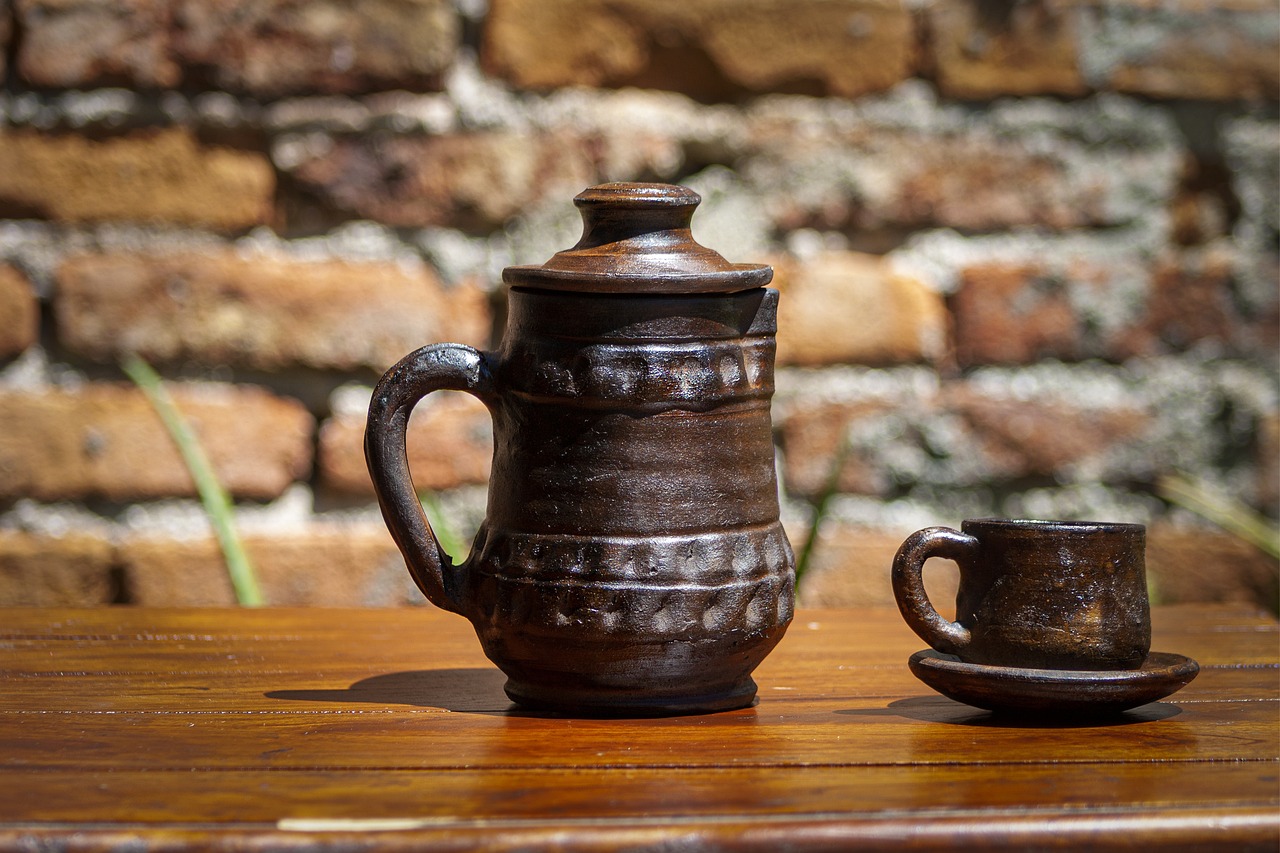
Environmental Considerations
When it comes to pottery, the environmental impact of firing techniques is an important consideration for many artists. Traditional wood-fired kilns, while offering unique aesthetic qualities, can contribute to higher levels of emissions compared to electric or gas kilns. This is primarily due to the combustion of wood, which releases carbon dioxide and other pollutants into the atmosphere. However, potters are increasingly aware of their ecological footprint and are taking steps to mitigate these effects.
One approach is the adoption of sustainable wood sources. By sourcing wood from responsibly managed forests or using reclaimed wood, potters can significantly reduce the environmental impact of their firing processes. Additionally, many potters are exploring alternative fuels and innovative firing techniques that minimize emissions. For example, some are experimenting with biomass fuels, which can be a more sustainable option compared to traditional firewood.
Moreover, the community aspect of wood firing can foster a culture of environmental responsibility. Potters often collaborate on firing events, sharing resources and knowledge about sustainable practices. This collaboration not only enhances the artistic process but also encourages a collective commitment to reducing environmental impact. Through workshops and community events, potters can learn about eco-friendly practices, such as:
- Utilizing efficient kiln designs that reduce fuel consumption.
- Implementing air quality control measures to capture emissions.
- Engaging in local reforestation efforts to offset carbon emissions.
It's also worth noting that electric kilns, while generally producing fewer emissions, still have their own environmental considerations. The source of the electricity used to power these kilns plays a crucial role. If the electricity is generated from fossil fuels, the overall environmental impact can still be significant. Therefore, potters are encouraged to seek out renewable energy sources, such as solar or wind power, to further reduce their carbon footprint.
In conclusion, while traditional wood-fired kilns may pose environmental challenges, the pottery community is actively seeking solutions to create a more sustainable practice. By embracing eco-friendly techniques and fostering collaboration, potters can enjoy the rich tradition of wood firing while being mindful of their impact on the planet.
Q: What is the environmental impact of wood-fired kilns?
A: Wood-fired kilns can contribute to higher emissions due to the combustion of wood, but sustainable practices can help mitigate this impact.
Q: How can potters reduce their carbon footprint?
A: Potters can reduce their carbon footprint by using responsibly sourced wood, exploring alternative fuels, and utilizing renewable energy sources for electric kilns.
Q: Are there any community initiatives for sustainable wood firing?
A: Yes, many potters engage in community workshops and events that focus on sustainable practices and share resources to minimize environmental impact.
Frequently Asked Questions
- What is the best type of kiln for beginners?
For beginners, electric kilns are often the best choice. They are user-friendly, offer precise temperature control, and require less experience to operate effectively. Plus, they can handle a variety of firing techniques, making them perfect for those just starting out in pottery.
- Can I use an electric kiln for all types of pottery?
Yes, electric kilns are versatile and can be used for low-fire, mid-fire, and high-fire ceramics. This makes them suitable for different clay bodies and glazes, allowing potters to explore various artistic styles without needing multiple kilns.
- What are the advantages of gas kilns?
Gas kilns offer several advantages, including the ability to reach higher temperatures and create unique effects through reduction firing. This can significantly enhance the final appearance and texture of your pottery, making them ideal for experienced potters looking for specific results.
- How do wood-fired kilns differ from electric and gas kilns?
Wood-fired kilns provide a traditional firing experience that often results in unique surface textures and colors. They require more skill and commitment, as well as community involvement, but can yield stunning, one-of-a-kind pieces that reflect the potter's personal touch.
- Are there environmental concerns with wood-fired kilns?
Yes, wood-fired kilns can have a larger environmental impact due to emissions. However, many potters are adopting sustainable practices to minimize their carbon footprint and make wood firing more eco-friendly. This includes using responsibly sourced wood and optimizing firing techniques.
- What should I consider when choosing a kiln?
When selecting a kiln, consider factors such as firing temperature, type of clay, and glaze you plan to use. Additionally, think about your budget, available space, and whether you prefer a more hands-on approach with wood or gas firing or the convenience of electric kilns.



















